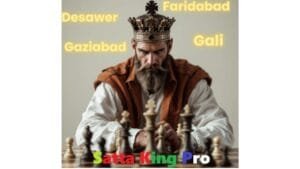The Forgotten Emperor of Satya Kalinga Darbar: A Historical Profile
In the annals of Indian history, there are few emperors who have left behind such an enigmatic and intriguing legacy as Visvavarman, the last emperor of the Satya Kalinga dynasty. Despite his significant contributions to the extension of the empire and the maturation of its administrative systems, Visvavarman’s story has largely been relegated to the shadows of history. In this article, we will delve into the life and reign of this remarkable emperor, shedding light on his achievements and challenges as the puppet master of the Satya Kalinga dynasty.
Early Life and Rise to Power
Visvavarman was born into the Kalinga royal family circa 1260 CE, during the reign of his father, Bhanuvarman. The Kalinga dynasty, a powerful and influential kingdom in eastern India, was known for its strategic trade routes and military might. From a young age, Visvavarman was trained in the arts of warfare, diplomacy, and statecraft, setting him apart from his contemporaries.
Assumption of the Throne
Following the death of his father, Visvavarman succeeded to the throne at the age of 20, becoming the 32nd ruler of the Kalinga dynasty. The Kalinga Empire was in a state of turmoil, with internal conflicts and external threats from neighboring kingdoms threatening its very existence. Visvavarman, determined to restore stability and conjure a brighter future, set out to revamp the administration, expand the empire, and ward off external dangers.
Administrative Reforms
Visvavarman was a shrewd and forward-thinking ruler who recognized the need to update the traditional structures of governance and modernize the empire’s administration. In 1285 CE, he introduced a new system of governance, dividing the empire into four administrative divisions: Rajyapuri, Mahotsavapuri, Nidumba, and Uparadhyaya. These new divisions helped to streamline tax collection, ensure more efficient management of resources, and enhance overall governance.
Military Reforms
Visvavarman was also a skilled military strategist, and he recognized the importance of a strong army for the survival and prosperity of the empire. He reorganized the army, introducing new tactics, training methods, and equipment. His military reforms allowed the Kalinga Empire to push back against the advances of the Pratihara Empire, a significant achievement considering the latter’s military prowess.
International Relations and Diplomacy
Visvavarman was a master diplomat, skilled in the art of maintaining relationships with neighboring kingdoms, some of which had once been bitter enemies. He forged alliances with the Bengal kings, the Vatsantal Kings, and even the powerful Kakatiya Empire, securing trade agreements, defensive pacts, and strategic marriages. These diplomatic efforts not only strengthened the Kalinga Empire but also contributed to the growth of trade and cultural exchange in the region.
Decline and Legacy
Despite his numerous successes, Visvavarman’s reign ultimately came to an end with his death in circa 1306 CE. His successors, lacking his vision, administrative and military acumen, and diplomatic prowess, failed to maintain the empire’s momentum. The Kalinga Empire began to decline, eventually succumbing to the pressures of internal conflicts, external threats, and the meteoric rise of the Vijayanagara Empire, the greatest power in 14th-century India.
Legacy
Visvavarman’s legacy is one of unsung heroism, military brilliance, and diplomatic finesse. Although his name is not etched in India’s mainstream history, his contributions to the growth and maturation of the Kalinga Empire, as well as his administrative and military reforms, warrant recognition. As the last emperor of the Satya Kalinga dynasty, Visvavarman’s story serves as a testament to the power of strategic thinking, leadership, and vision.
In conclusion, Visvavarman, the forgotten emperor of Satya Kalinga Darbar, deserves a rediscovery and reevaluation of his remarkable achievements. As we reflect on his life and reign, we are reminded of the importance of strategic thinking, leadership, and vision in shaping the destiny of empires and civilizations.





